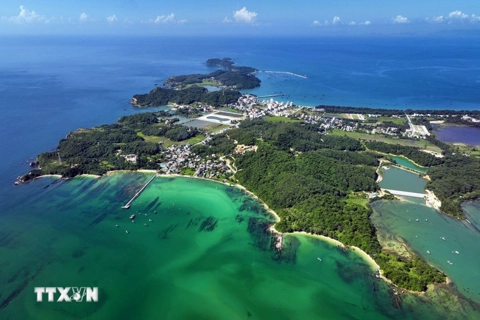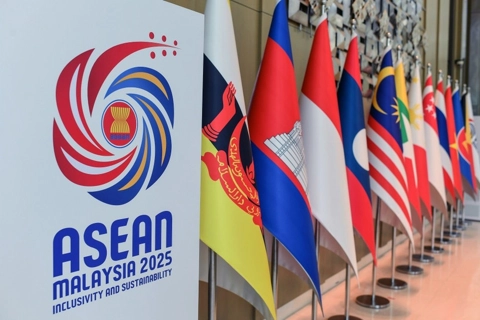Vietnam
Five years after PCA verdict: China still ignores South China Sea ruling
Jul 12, 2021 / 04:20 PM
China has rejected the ruling and claimed 90% of the South China Sea region within a so-called Nine-Dash Line. The region is contested by Vietnam, the Philippines, Brunei, Malaysia, and Taiwan.
Five years ago, the Permanent Court of Arbitration (PCA) ruled, on an arbitration case brought by the Republic of the Philippines against the People's Republic of China (PRC) under Annex VII to the United Nations Convention on the Law of the Sea, that the China’s nine-dashed line claim of “historic rights” to the waters of the South China Sea (called East Sea by Vietnam) is invalid.
China has rejected the ruling.
In conversation with The Hanoi Times, Professor Carl Thayer from Australian Defence Force Academy analyzed the implications of the PCA rulings in the South China Sea dispute since then.
What have been the implications of ruling on the South China Sea (SCS) dispute since then?
The final Award by Arbitral Tribunal is now part of international case law and has universal applicability. Historic rights were superseded by UNCLOS and cannot be used to claim features or maritime zones. According to UNCLOS, the Award is final, is not subject to appeal, and must be complied with immediately.
The reality is that China has brazenly refused to comply with the Award. UNCLOS makes no provision for enforcement and so the status quo prevailed. Since the Award, China has further consolidated its presence in the Spratlys by completing construction on seven so-called “artificial islands” and militarising them. The artificial islands serve as foreign operating bases for China’s navy, coast guard, maritime militia, and fishing fleets.
In late 2019 and in 2020, Malaysia, the Philippines, Vietnam, and Indonesia all tendered Note Verbales to the UN Commission on the Limits of the Continental Shelf rejecting China’s claim to historic right and its nine-dash line map. The United States, Australia, and jointly France-Germany-United Kingdom issues similar diplomatic notes that also rejected China’s claim to historic rights.
In sum, the Arbitral Tribunal Award has never been complied with by China.
Would the PCA judgment in favor of the Philippines create any precedent for other countries in the region to follow suit?
UNCLOS does not address issues of disputes over sovereignty or delimitation of maritime boundaries. UNCLOS only addresses disputes over its interpretation and application. The Philippines wisely chose to ask the Arbitral Tribunal to rule on its entitlements under UNCLOS and to declare the nine-dash line illegal.
If another state considered taking legal action against China under the binding dispute resolution clauses in UNCLOS, they would first have to demonstrate that they had entered into negotiations with China in good faith and that there was no possibility of a resolution. A state contemplating making a claim against China would need to document a major incident that crystallized the dispute.
Quite clearly the Philippine claim against China, with its focus on entitlements under UNCLOS, is a good template for any country considering taking legal action against China. But the risk of doing so would be to see a repeat of China’s response during 2013-16. In other words, the legal proceedings could result in a victory against China but with no practical result because China would refuse to take part and reject any Award contrary to its interests. In addition, any country taking legal action would have to anticipate various forms of retaliation by China, including economic sanctions, bullying at sea, harassment of offshore oil production, and freezing of political relations.
How can ASEAN countries solve disputes in the SCS in line with international law, in the current situation?
There are three possibilities. First, disputes over sovereignty and maritime delimitation can be resolved if both parties adhere to the United Nations Charter that calls for peaceful settlement of disputes “by negotiation, inquiry, mediation, conciliation, arbitration, judicial settlement, resort to regional agencies or arrangements, or other peaceful means of their own choice.” The key here is that both parties must agree to arbitration and judicial settlement and agree to adhere to the outcome.
Second, disputes that involve the interpretation and application of UNCLOS can be raised under UNCLOS through its four binding dispute resolution mechanisms. If the parties to the dispute do not agree on the mechanism, an Arbitral Tribunal is the default position. But UNCLOS has no enforcement mechanism and relies on the goodwill of the parties. China is unlikely to participate.
Third, a state could seek a resolution of disputes with China under international law as a political tactic to put pressure on China to conform due to unfavorable publicity. ASEAN states, for example, could appeal for support by the international community including the major maritime powers. ASEAN states could continually raise their disputes with China in multilateral international forums including the UN General Assembly. This approach could inflict damage on China’s international reputation but would likely result in retaliation.
Thank you for your time!

.jpeg)










